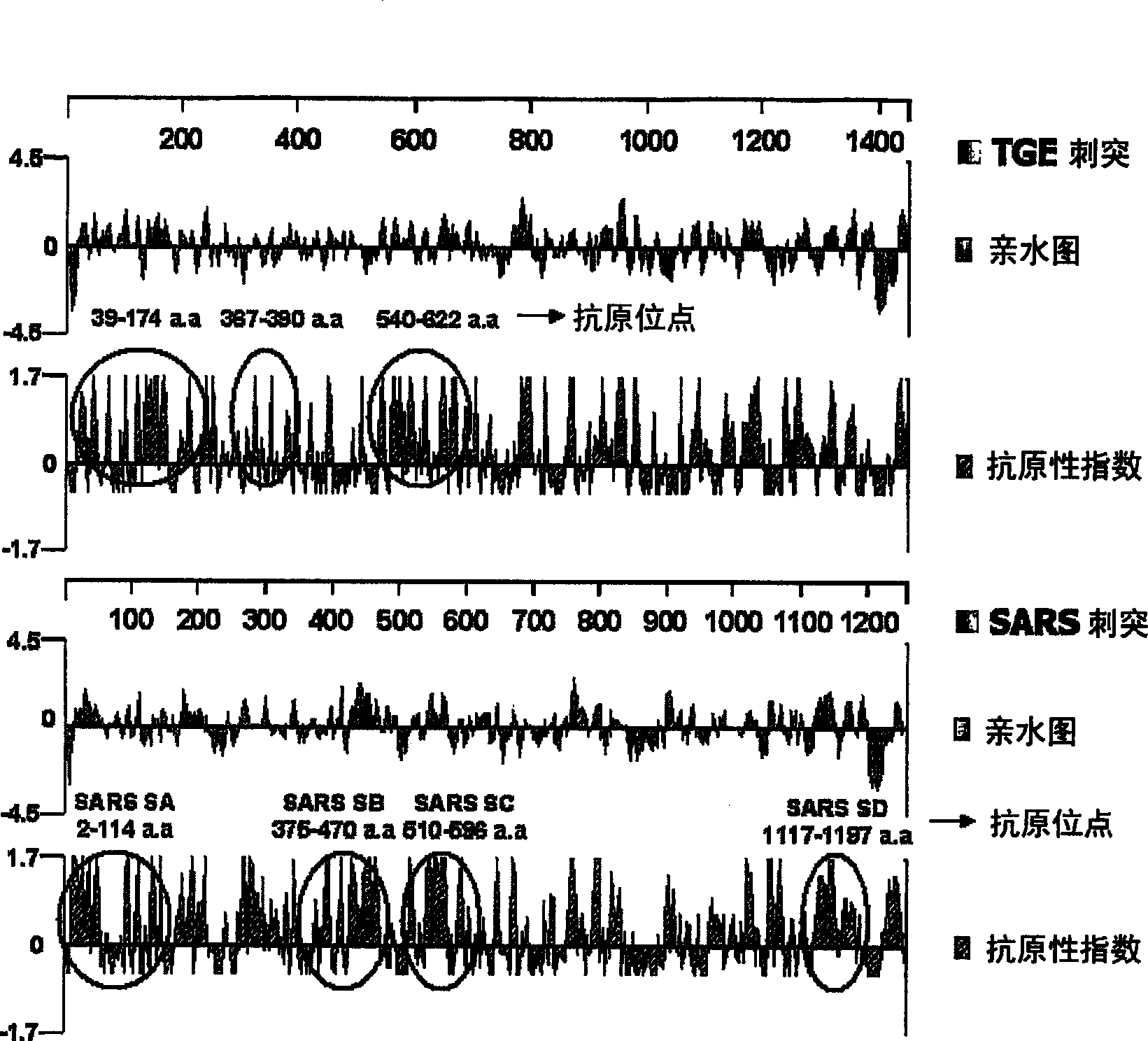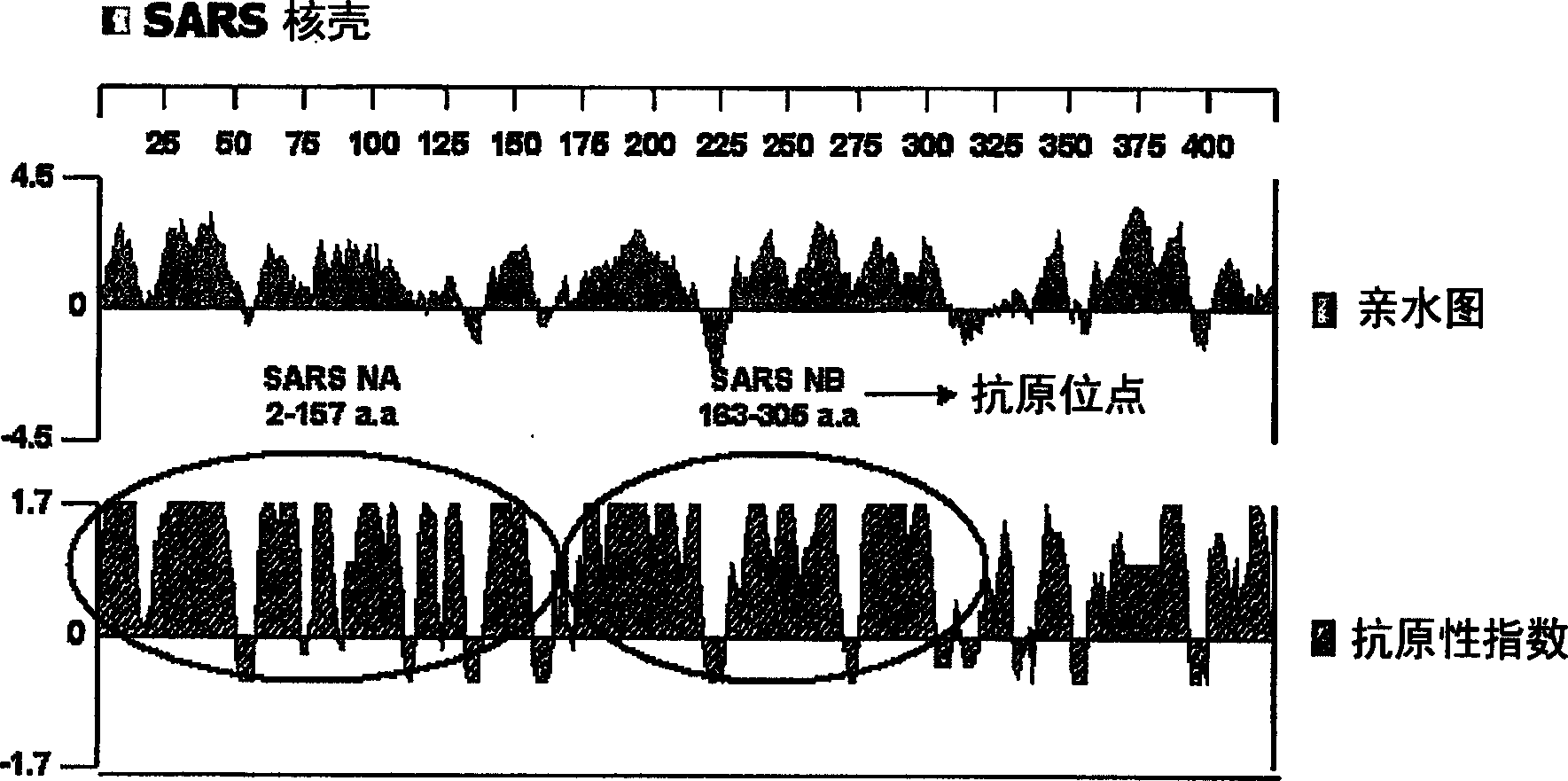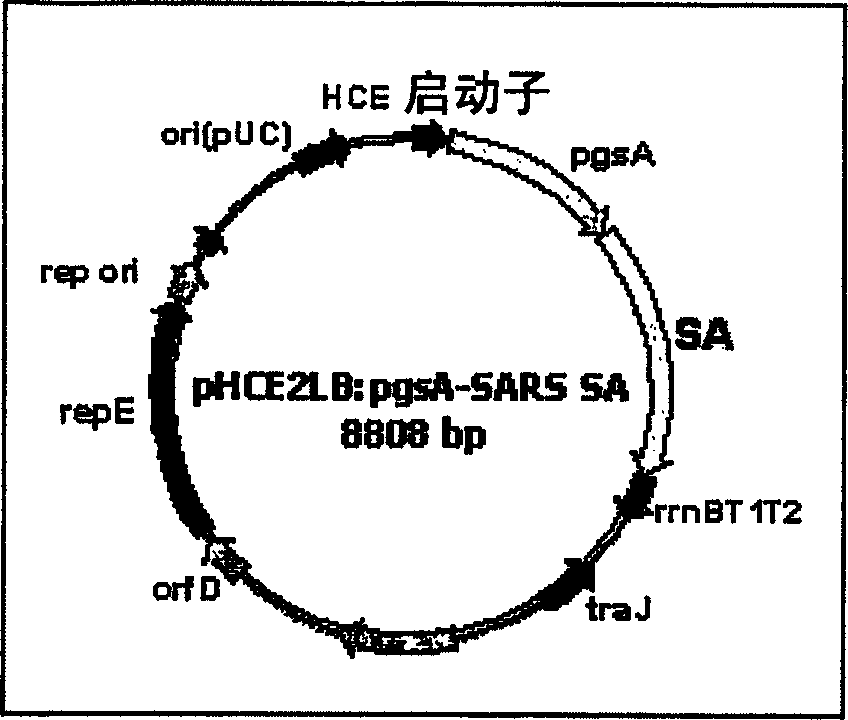Cell surface expression vector of SARS virus antigen and microorganisms transformed thereby
A surface expression, microorganism technology, applied in the direction of microorganisms, viruses/phages, double-stranded DNA viruses, etc., can solve the problem that the surface anchoring sequence has not been developed.
- Summary
- Abstract
- Description
- Claims
- Application Information
AI Technical Summary
Problems solved by technology
Method used
Image
Examples
Embodiment 1
[0047] Embodiment 1: the synthesis of the antigenic site gene of the spike protein of SARS coronavirus
[0048] The spike protein of SARS coronavirus is a glycoprotein consisting of 1256 amino acids. In other coronaviruses that have been extensively tested, the spike protein is mostly embedded in the envelope protein that covers the surface of the virus particle, with an exposed structure. Exposure sites and antigenic sites have been intensively studied as target antigens for vaccines that induce viral infection and prevent infection.
[0049] Therefore, in order to select the site that can show antigenicity from the 1256 amino acids of the spike protein of SARS coronavirus, the spike of porcine transmissible gastroenteritis (TGE) coronavirus has been studied and synthesized for other Protein comparative analysis and structural comparative analysis were carried out to select antigenic sites. Specifically, it is known that the antigenic sites of the spike protein of porcine t...
Embodiment 2
[0070] Embodiment 2: the synthesis of the antigenic site gene of the nucleocapsid protein of SARS coronavirus
[0071] The nucleocapsid protein of SARS coronavirus is a protein consisting of 422 amino acids. Nucleocapsid proteins of most other coronaviruses have been reported to serve as antigens. These antigenic sites have been intensively studied for use as targeting antigens for vaccines against coronavirus infection.
[0072] Therefore, by carrying out protein comparative analysis with the nucleocapsid protein of porcine transmissible gastroenteritis (TGE), select the site that can show antigenicity in the amino acid of the nucleocapsid protein of SARS coronavirus, and carry out synthesis.
[0073] Specifically, the nucleocapsid protein of porcine transmissible gastroenteritis virus and the nucleocapsid of SARS coronavirus were analyzed according to the hydrophilicity map of the Kyte-Doolittle method, the antigenicity index of the Jameson-wolf method, and the surface like...
Embodiment 3
[0089] Embodiment 3: Construction of surface expression vector pHCE2LB: pgsA-SARS SA and pHCE2LB: pgsA-SARS SC
[0090]Taking Gram-negative bacteria and Gram-positive bacteria as hosts, using pgsA in the outer cell membrane protein gene (pgsBCA) derived from Bacillus strains and involved in the synthesis of poly-γ-glutamic acid to construct surface-expressing SARS The surface expression vectors pHCE2LB: pgsA-SARS SA and pHCE2LB: pgsA-SARS SC of the antigenic sites of the spike protein of the coronavirus SARS SA and SC.
[0091] First, digest pHCE2LB: pgsA-HPVL1 (KCTC 10349BP) with BamHI and KpnI to introduce the antigenic sites SARS SA and SARS SC in the spike protein of SARS coronavirus into Gram-negative bacteria and Gram-positive bacteria. On the surface expression carrier expressing the L1 antigen of human papillomavirus in the host of bacteria (a kind of carrier, it contains high expression promoter HCE promoter, the gene that participates in the outer cell membrane prote...
PUM
 Login to View More
Login to View More Abstract
Description
Claims
Application Information
 Login to View More
Login to View More - R&D
- Intellectual Property
- Life Sciences
- Materials
- Tech Scout
- Unparalleled Data Quality
- Higher Quality Content
- 60% Fewer Hallucinations
Browse by: Latest US Patents, China's latest patents, Technical Efficacy Thesaurus, Application Domain, Technology Topic, Popular Technical Reports.
© 2025 PatSnap. All rights reserved.Legal|Privacy policy|Modern Slavery Act Transparency Statement|Sitemap|About US| Contact US: help@patsnap.com



